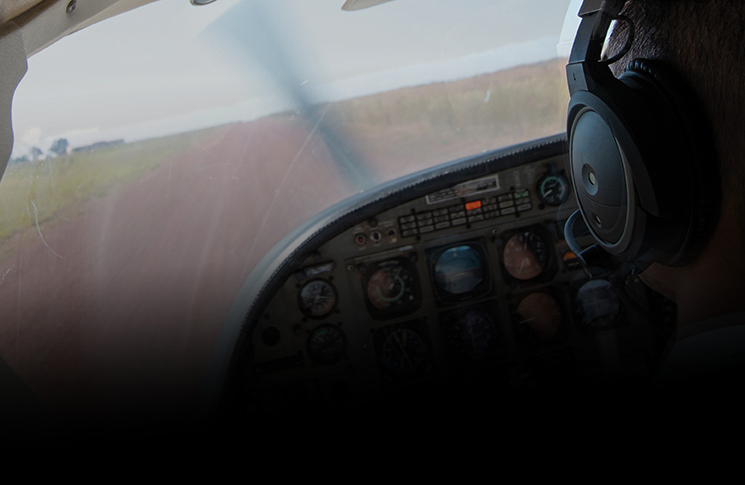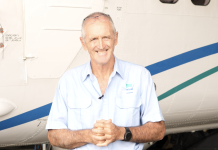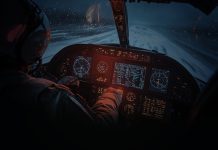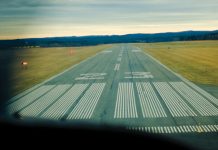Doing it right could save your life, so why not practise?
While no pilot would willingly choose to experience a real-life engine failure after take-off (EFATO), regularly practising simulated emergency procedures alongside circuit training should be a conscious decision.
However, what instructors are seeing and hearing from pilots day-in and day-out at their annual flight review (AFR) is that they’re ‘a bit rusty’ or ‘I haven’t really practised my forced landings in a while’.
Even though most flying schools encourage pilots to practise emergency procedures solo, ‘They don’t normally do it, once licensed,’ Enzo Iacono, Grade 1 Instructor at The Aerobatic School, says.
Practice forced landings (PFLs) are not the ones you want to get rusty.
Realities of rehearsal
In an ideal world, pilots would do PFLs and circuit procedures at every opportunity. But flying is expensive and, for those who don’t fly regularly, the least exciting thing to do when going up for their first flight in weeks (with a friend) is to practise emergency landings.
‘I don’t think people don’t want to practise,’ Enzo says. ‘I think if instructors could hand out a free 1.0 VDO every month, most pilots would be more likely to practise. But often people don’t want to spend the money.’
So then, without regular practice, that one landing after an infrequent jolly to the training area gets worse and worse until eventually, they hit their AFR and the instructor tells them to go practise circuits. ‘That’s why every school has a currency limitation,’ Enzo says.
‘If money were no objective, I’d suggest a solo consolidation flight every 30 days, exactly as students do before the pre-licence examination. Go out, do some stalling, a PFL, aerobatics – if trained for this – and then practise some circuits. That would help pilots stay current. Doing this once every 60 or 90 days is not enough.’
Value of visualisation and pre-flight prep
Enzo also suggests ‘chair flying’ the emergency procedures at home. ‘Go through your notes and visualise,’ he says. ‘Practise the procedural part on the ground before doing it in the aeroplane; it costs nothing and you can review this as often as you want.’
‘You can do all this on a whiteboard until it becomes so natural that it’s not this big mental block,’ Enzo says.
Once you’re licensed, it’s all on you
When you’re in the training course, you’re in the zone and learning. You’ve got an instructor riding shotgun – it’s all great. But what happens after you’ve graduated? Who’s policing your currency and proficiency?
‘Your instructor isn’t going to ring you and say, “Time for PFLs”,’ Enzo says. ‘And the idea some people have, that they’ll fly beyond their ability in an emergency, is false. You fall back to the level of your training. And then, you should probably take away a little more in a real emergency. Some may perform better under pressure than others, but most won’t rise beyond their training.
‘It takes pilot maturity to spend the money and stay proficient. Only a small percentage of pilots will take themselves to an instructor and say they’re not up to scratch or are feeling uncurrent and need some more work.’
Flip your perspective
Sometimes the thought of possibly opening Pandora’s box, after not practising a PFL for some time, feels overwhelming – to the point you avoid practising altogether, until you absolutely have to, for currency. That’s not a good attitude to adopt. That mindset only hinders progression and experience, in all aspects of flying.
A better approach would be to say to yourself or the instructor, ‘Let’s have a go – let’s see how bad it is’, because, from there, you’ve got room to improve.
‘We’re here to help you,’ Enzo says. ‘I understand that sometimes there’s a stigma in flying schools where students or pilots feel embarrassed or berated if they stuff up a PFL. But these are rarely perfect because they can be difficult. It’s not about being perfect – it’s about cleaning it up to the point where you’re safe, where you get the aeroplane on the ground in an emergency, and it’s not a catastrophe.
‘We need to remember that all the manoeuvres and modes of flight get rusty over time, but the PFLs are not the ones you want to get rusty.’
There are many considerations and decisions you can make before departure about emergency landings – especially when flying in your local area.
- Identify the possible field(s). You should have some idea of potential emergency landing fields – especially in familiar areas. If you don’t, pull up Google satellite maps. Review the landscape you fly in.
- Wind direction. Knowing wind direction before you leave can save time working out what way to land on a field in an emergency. Yes, it can vary, but having some idea is far better than none.
- What are the decision points? Once you’ve identified possible landing fields, based on the wind direction, where would the ‘high key’ and ‘low key’ points be if you had an EFATO today? It can happen anywhere, at any time but, if you’re in the training area and know there are 2 suitable fields, considering these points will prepare you better in an emergency.





